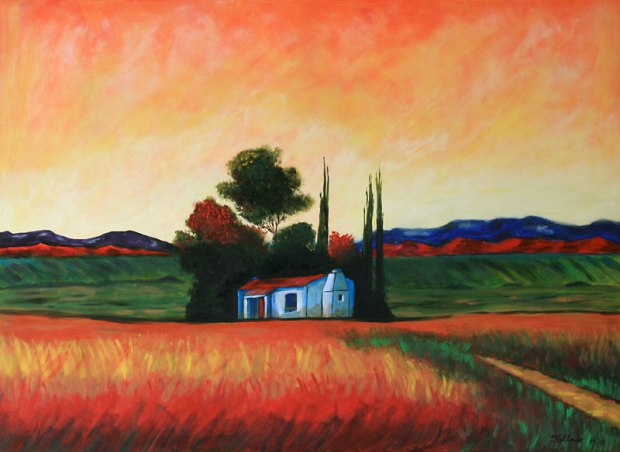Over the last few years, first painting as a hobbyist and lately as a minor art master (painting every day), I have tried many different surfaces to paint on. At the moment my favourite is hardboard. Why? Well, I like to paint on a large scale and I find that the stretched canvases are just too soft and pliable. But, most importantly, I choose to paint on hardboard because it is cheaper and it gives me the freedom to make mistakes and start over. A few layers of white PVA covers anything!

This is one of my largest paintings done on canvas. (1.8m x 1m)
Most of my animal paintings were done on hardboard.
All my newest portraits are done on hardboard too.
What do other painters out there prefer, I wonder?








Wow 😮 These are my favourite so far! Great job
LikeLiked by 1 person
Lovely paintings.
LikeLiked by 1 person
When you say “hardboard”, what do you mean? Supawood… masonite… MDF board… (aren’t supawood and MDF the same thing? she asks…)
It’s awesome that you put this into words. I’m sort of swaying between continuing with canvases vs moving to supawood.MDF. I have painted on canvases FOREVER, but earlier this year was given a primed piece of supawood to paint on and it was MAGIC. Just something about that keyed surface made it 100 times better to paint on than shop-bought canvas. But…
I spoke to a boutique gallery owner recently who said that it’s better to paint on blocked canvas because that makes your paintings more sellable. I just think that if you (and me) as the artist find supawood cheaper to buy, easier to paint on, easier to store, transport, and post, then shouldn’t that make a case for making it our preferred medium?
Personally, my experience for what patrons want is split down the middle: some want ready-to-hang art, while others want something for which they can choose their own frame. I have an artist friend who only paints on supawood and his argument was that it’s much easier for him to drive around with 80 paintings on wood stashed in his car than 80 blocked canvases.
It’s a tough one. Sorry for my ramble, but the pros and cons could be endless… Thanks for your post 🙂
LikeLiked by 1 person
Thanks so much for commenting – I really did want to know what other artists do! I have no idea what the hardboard really is. I buy it in big sheets at a hardware store, then my son or husband jig-saws it to the size I like it.
I spoke to an artist friend of mine who has the best of both worlds. He has someone who makes him blocked hardboard. So it has the surface of the hardboard, but is ready to hang. But, more difficult to transport!
Another artist friend of mine has her hardboard paintings framed with a very simple, cheaper frame for gallery exhibitions and then when the paintings sell the new owner can have it re-framed if they want to.
I am so new to this, I’ll have to see what my clients want. Thanks a million for your input – really appreciate it!
LikeLiked by 1 person
Not sure why this comment didn’t show until now…
I think we’re talking about the same thing in terms of hardboard (especially when you described your friend’s blocked hardboard).
I think the trick is to do a variety of paintings on a variety of surfaces and see which ones tick all of the boxes for both you/artist and client.
But… supawood, here I come! 😉
LikeLiked by 1 person
They all look amazing
LikeLike
Thank you so much, I am so glad you like them!
LikeLike
your welcome
LikeLike
Great work. My chosen canvas is cedar and pine. You can check it out here… https://woodcanvasartist.wordpress.com/blog/
LikeLike
Thank you so much. Your work is lovely!
LikeLike